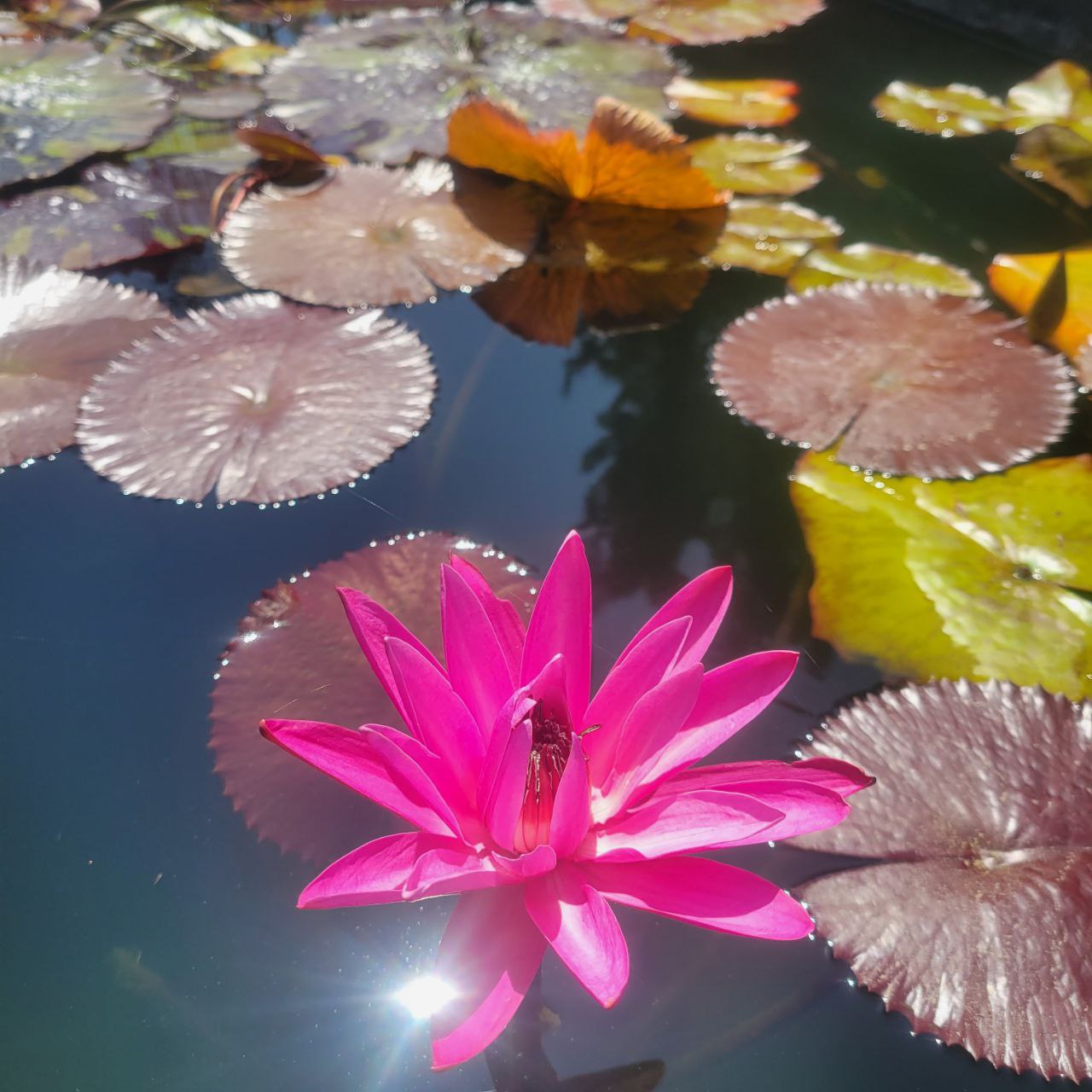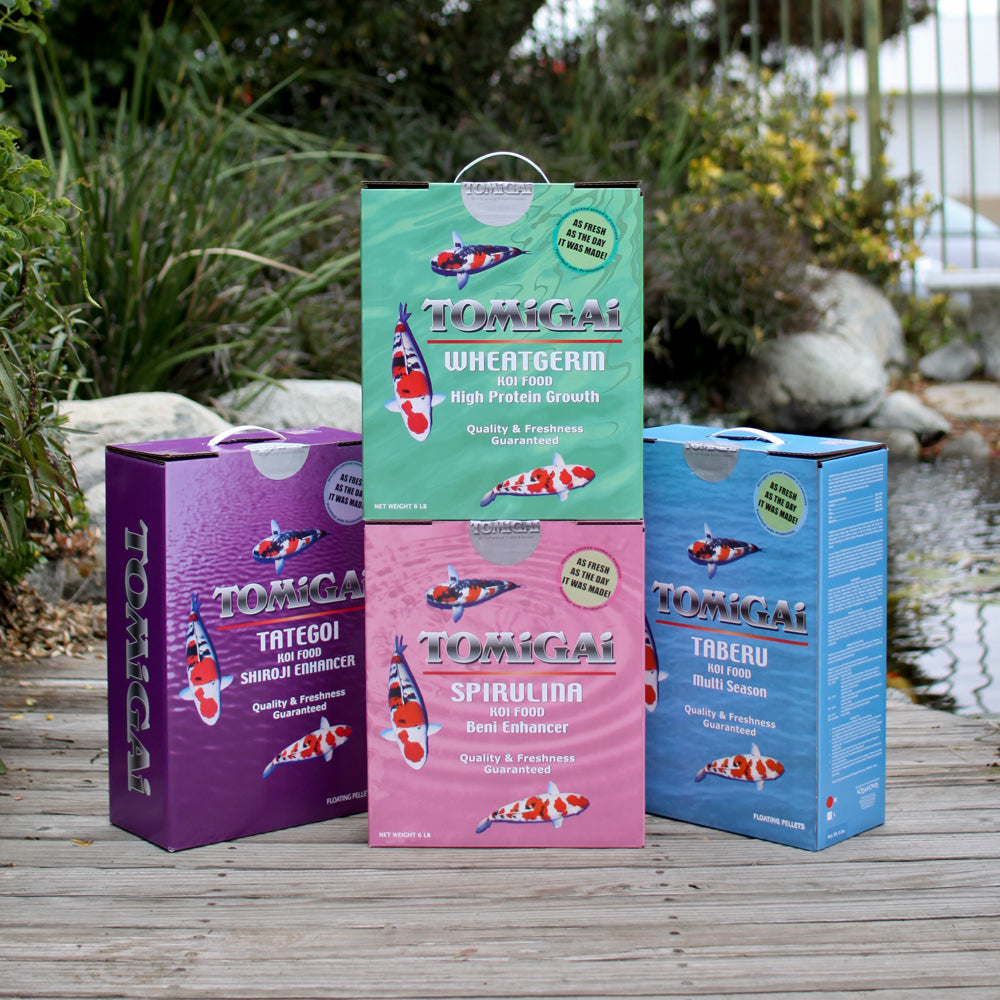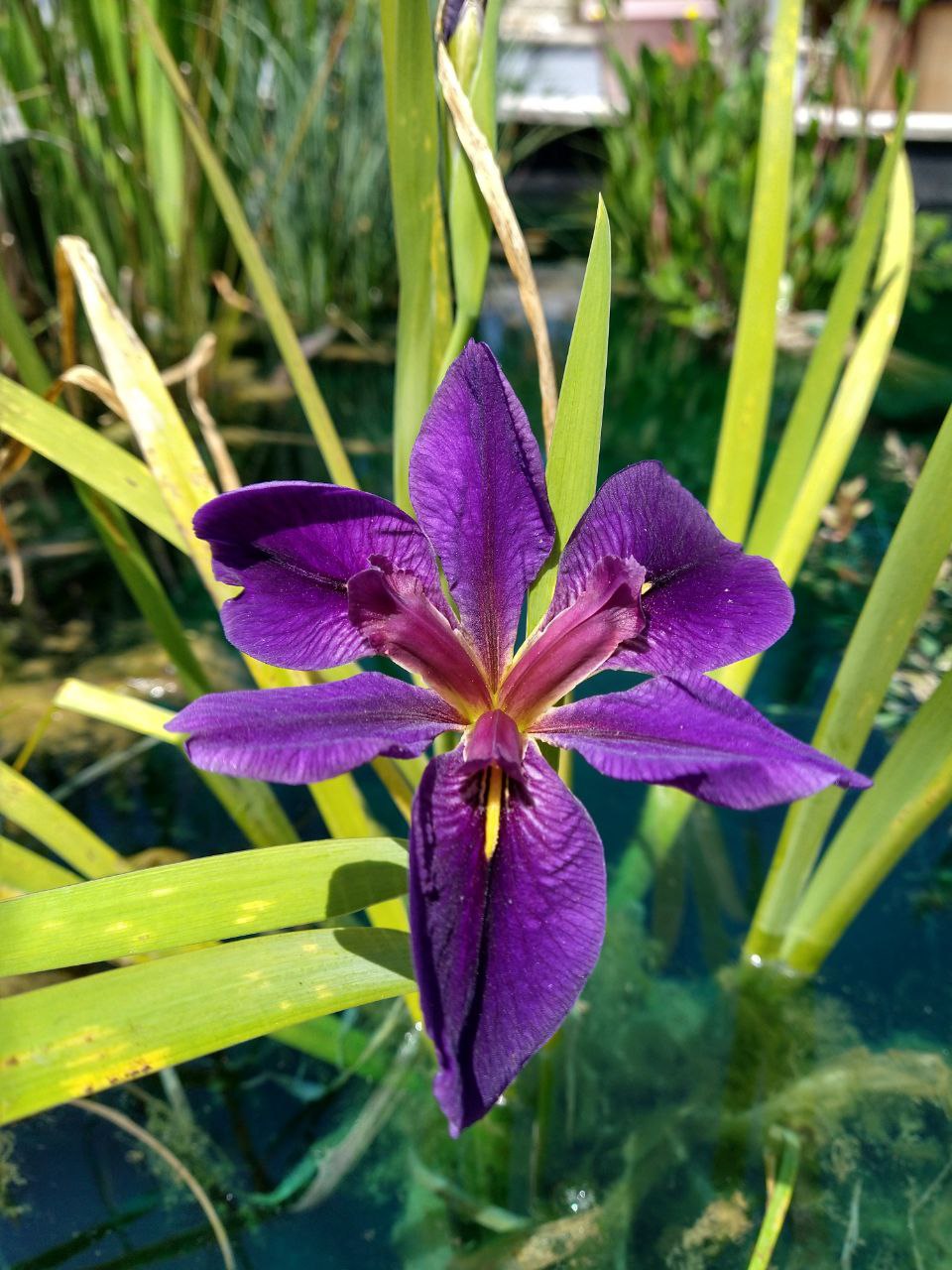
Water Lily Care Guide
Water Lily FAQ & Care Sheet
What is a water lily? Water lilies are a family of flowering plants native to temperate and tropical areas around the world. They carry historical and modern significance/symbolism in certain cultures and religions.
Hardy vs. Tropical Lilies:
Hardy lilies will go dormant, but should survive winters if set below the freeze line in your pond. Tropical lilies will need to be stored indoors to survive winter. Hardy water lilies only bloom during the day, while tropicals come in day and night-bloomers.
They can be told apart by how far the flower is from the water’s surface (hardies hold their flowers right at the water’s surface, while tropicals extend a few inches or more above it). Tropicals tend to include more variety in color, including purples and blues, and have thinner, serrated-edged leaves, while hardy’s leaves are thicker, more rounded and smooth along the edges.
What are the pros and cons of adding water lilies to my pond?
Pros:
- Lily leaves give your pond coverage, providing protection from excess sunlight and predators
- Aid in oxygenating pond water
- Absorb excess nutrients, which may help aid in controlling algae growth and water quality
- Provides additional visual interest and natural beauty to your pond
Cons:
- May quickly spread, becoming invasive and taking over the whole pond
- Overgrowth of invasive lilies or excess fish waste of overstocked ponds with lilies may reduce oxygen in ponds, which is essential for pond fish and other pond-dwellers
- Require routine maintenance (trimming excess growth, repotting, winterizing, etc.)
- May become costly or laborious to maintain
Caring for your water lilies:
- Most water lilies prefer 6+ hours of sunlight to bloom, but some may bloom with 4+ hours.
- In spring, lilies will need repotting in fresh aquatic soil or clay mix and fertilizer. Lilies with roots that prove too dense may be divided up.
- Tropical lilies tend to do best if given additional fertilizer during the summer months.
- Hardy water lilies can winterize in ponds that do not freeze the rhizome (root system) of your lily. If you have tropical lilies, or a pond that may freeze the rhizome, it is recommended to remove the potted lily and keep them in plastic bags to retain moisture. Store where temperatures remain 50 degrees F or higher, then re-pot with fresh soil and tablet fertilizer in the spring.
- Wider pots are more ideal for repotting lilies over deep plant pots because the rhizome spreads across the surface of the soil.
Will my fish eat my water lilies? Maybe! While most goldfish and baby koi will live in harmony with your plants, hungry or overstocked fish may choose to make your plants a tasty snack. Larger koi are more often guilty of this and are inclined to root around in the plant soil.
What is a water lily? Water lilies are a family of flowering plants native to temperate and tropical areas around the world. They carry historical and modern significance/symbolism in certain cultures and religions.
Hardy vs. Tropical Lilies:
Hardy lilies will go dormant, but should survive winters if set below the freeze line in your pond. Tropical lilies will need to be stored indoors to survive winter. Hardy water lilies only bloom during the day, while tropicals come in day and night-bloomers.
They can be told apart by how far the flower is from the water’s surface (hardies hold their flowers right at the water’s surface, while tropicals extend a few inches or more above it). Tropicals tend to include more variety in color, including purples and blues, and have thinner, serrated-edged leaves, while hardy’s leaves are thicker, more rounded and smooth along the edges.
What are the pros and cons of adding water lilies to my pond?
Pros:
- Lily leaves give your pond coverage, providing protection from excess sunlight and predators
- Aid in oxygenating pond water
- Absorb excess nutrients, which may help aid in controlling algae growth and water quality
- Provides additional visual interest and natural beauty to your pond
Cons:
- May quickly spread, becoming invasive and taking over the whole pond
- Overgrowth of invasive lilies or excess fish waste of overstocked ponds with lilies may reduce oxygen in ponds, which is essential for pond fish and other pond-dwellers
- Require routine maintenance (trimming excess growth, repotting, winterizing, etc.)
- May become costly or laborious to maintain
Caring for your water lilies:
- Most water lilies prefer 6+ hours of sunlight to bloom, but some may bloom with 4+ hours.
- In spring, lilies will need repotting in fresh aquatic soil or clay mix and fertilizer. Lilies with roots that prove too dense may be divided up.
- Tropical lilies tend to do best if given additional fertilizer during the summer months.
- Hardy water lilies can winterize in ponds that do not freeze the rhizome (root system) of your lily. If you have tropical lilies, or a pond that may freeze the rhizome, it is recommended to remove the potted lily and keep them in plastic bags to retain moisture. Store where temperatures remain 50 degrees F or higher, then re-pot with fresh soil and tablet fertilizer in the spring.
- Wider pots are more ideal for repotting lilies over deep plant pots because the rhizome spreads across the surface of the soil.
Will my fish eat my water lilies? Maybe! While most goldfish and baby koi will live in harmony with your plants, hungry or overstocked fish may choose to make your plants a tasty snack. Larger koi are more often guilty of this and are inclined to root around in the plant soil.




